Crypto Academy week 15-Homework post for Professor (@alphafx)|| Scalability and improvement made and still to be made


Make a transaction on the Binance smart Chain and Tron blockchain (you can use any token) and Show the time taken for each transaction to be verified (original screenshots must be included)
These two transactions were carried out from my
• Binance exchange wallet to my TronLink wallet
• TronLink wallet to my Binance exchange wallet
They were carried out on Thursday, May 27 2021 and Friday, 28 May 2021 and all pictures are screenshots that were taken with my phone.
All I ever transferred in the transactions are TRX.
1- Firstly, I logged into my Binance wallet and at the time of login, I had 169 TRX in my wallet balance.
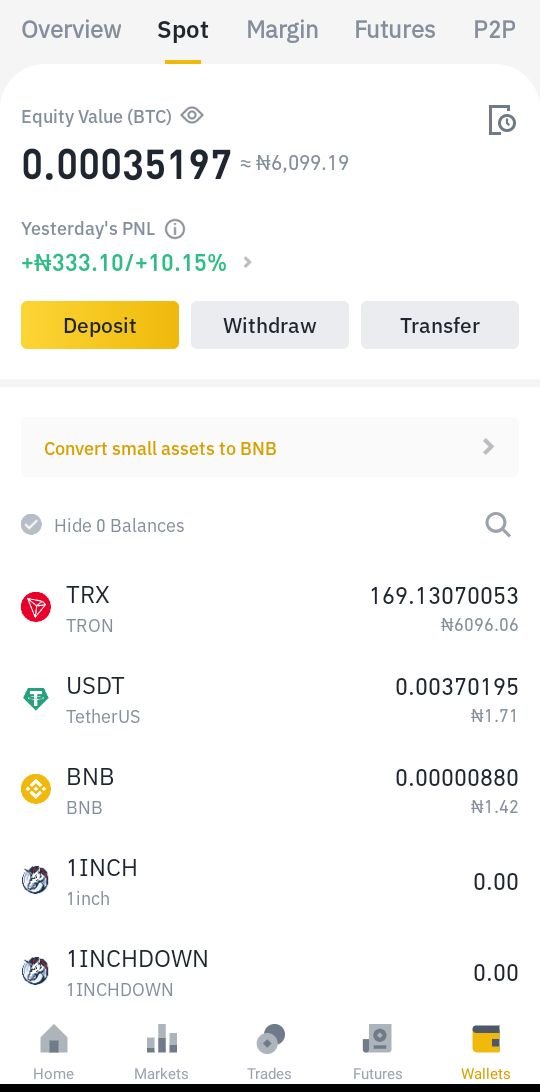
2- Next, I proceeded to transfer 169 TRX to my Tronlink wallet. I filled in the address of my Tronlink wallet and input amount of Tronx I wanted to transfer. I then proceeded with my Binance password and confirmation via my phone number.
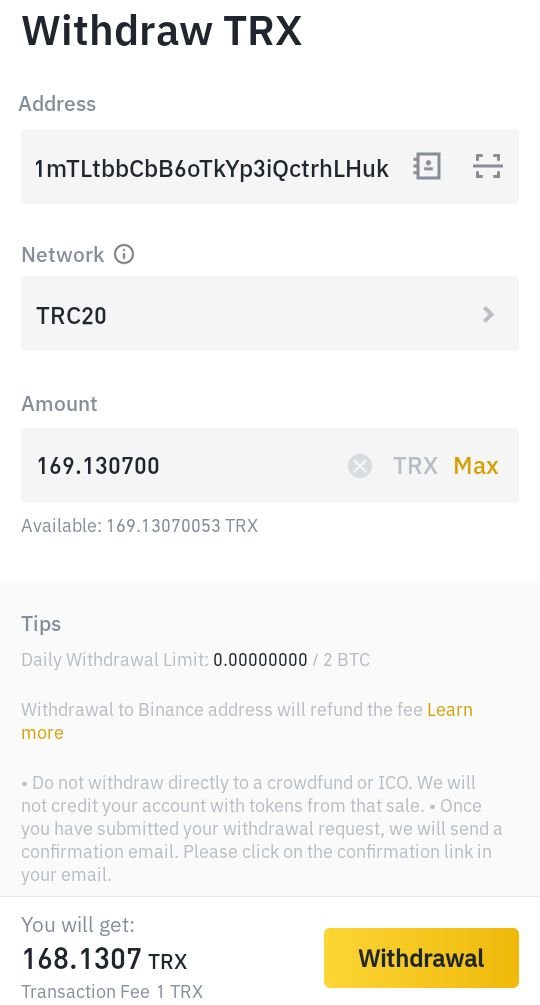
3- Next, I got a message that the transaction is being processed. So I go on to my transaction list on Binance to view my transaction and the time as well as that is what I am interested in.
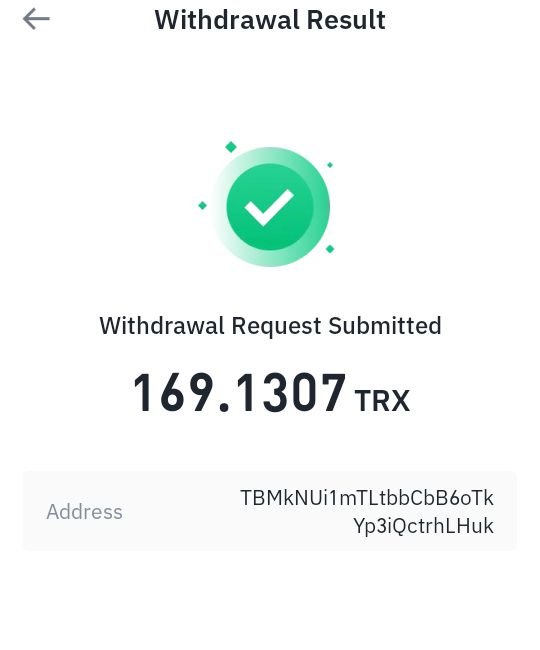
With the information that can be seen on the screenshot, the transaction of 169 TRX had been initiated at 13:13 on Binance .
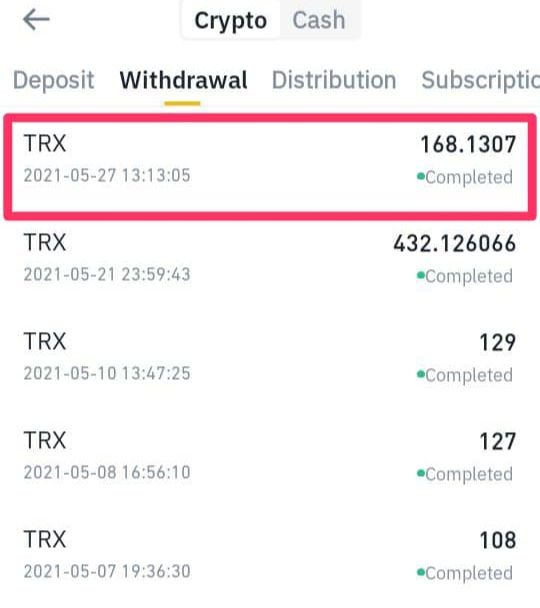
4- Next, I login to my Tronlink wallet to view if the transaction has been successful. I was able to confirm the transaction and it got into my wallet at 6:14 a.m Nigerian time.
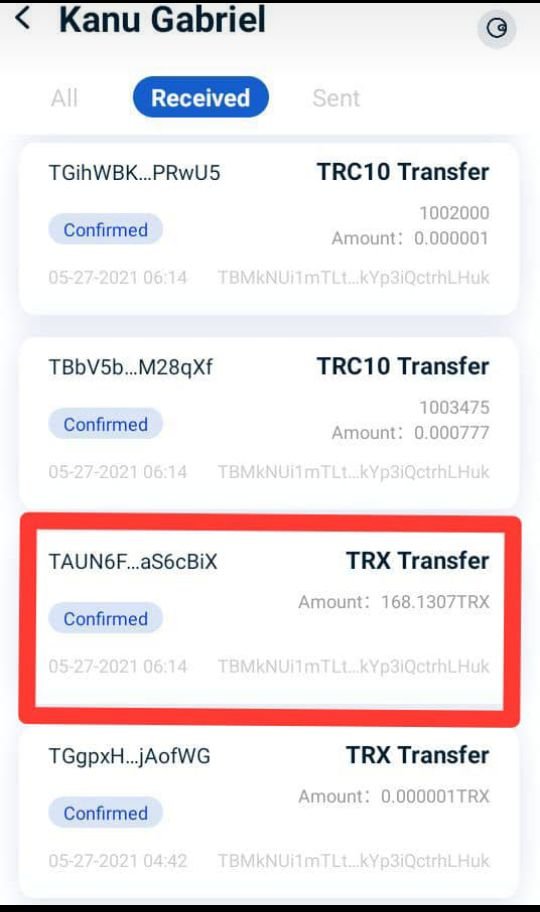
• So with this, the transfer of 169 TRX from my Binance account took less than 1 minuite to get delivered into my Tronlink wallet.
(Note that I was charged a service fee of 1 TRX on the Binance exchange)
The next Transactions as I am already in my Tronlink wallet is to transfer 159 TRX to my Binance exchange wallet.
1- firstly, I click on transfer.
There, I inputed my Binance exchange wallet address for TRX and inputed 159 TRX to be transferred.
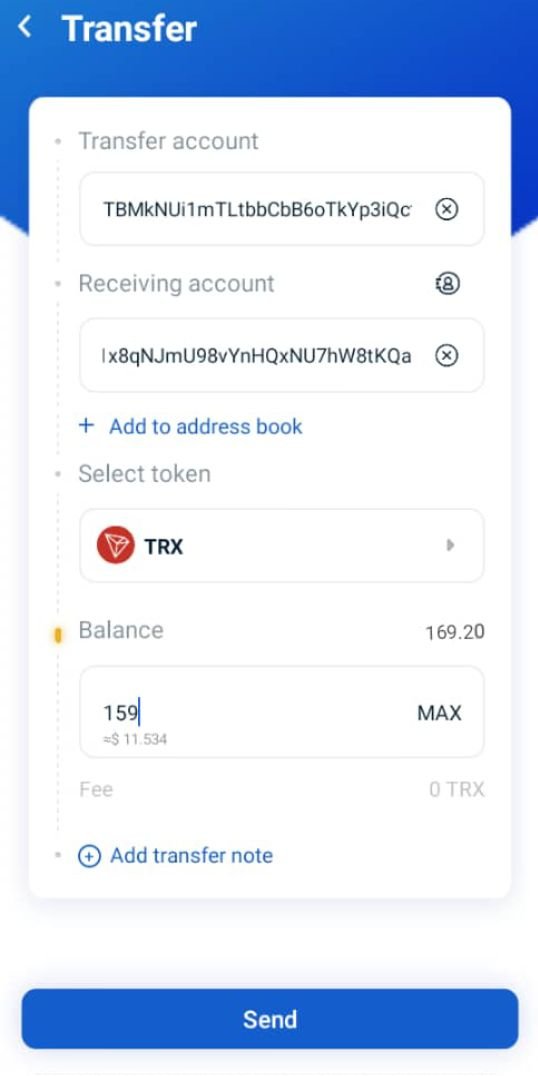
2- I then inputed my password and confirmed the transaction.
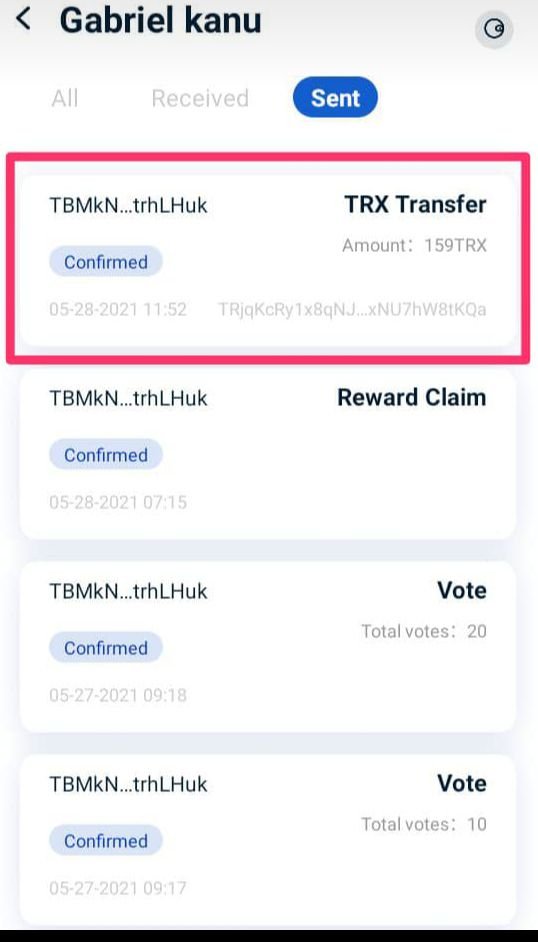
3- Next, I login to my Binance exchange wallet. (Remember that I had previously transferred all my TRX in my Binance exchange wallet leaving it with a zero TRX balance)
I can see that I now have 159 TRX.
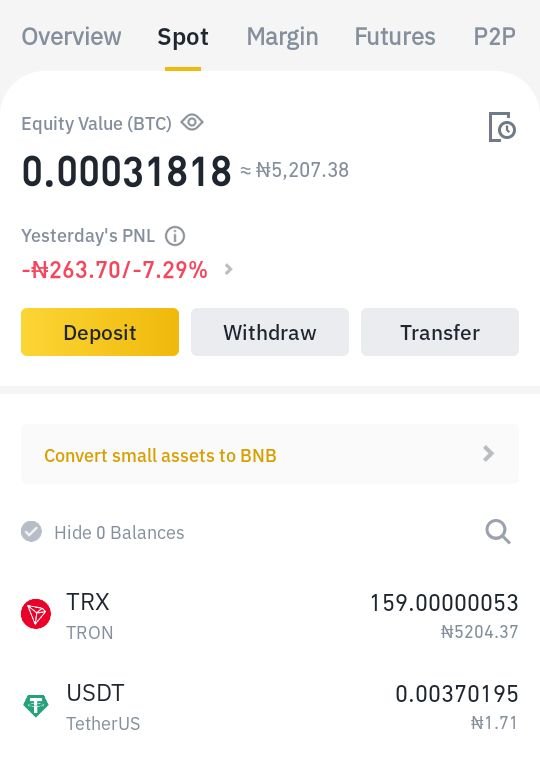
4- Next, I then proceeded to check when the Transaction was received. The TRX reflected in my Binance exchange wallet at 11:53
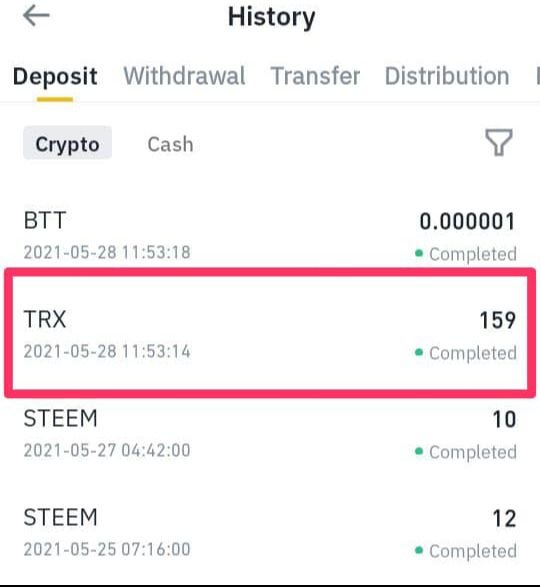
So doing my maths, I got the result that the Transaction was completed in a minuite and some seconds.
My Transaction Summary
• Tronlink transaction was completed and verified in 1 minuite
• Binance exchange Transaction was completed and verified in less than 1 minuite

Compare the scalability and speed of the two against BTC
From the experiment above we can see that the scalability of Tron and Binance individually are far greater than that of Bitcoin.
On a wider analysis range, Tron completes and verifies up to 2000 transactions per second.
Binance also complete and verifies about 1.4 million transactions per second.
When compared to Bitcoin, which complete and verifies 5 transactions per second (although it does vary from 4.6 to 5 at different times) we can see that the scalability of the first two is greater than that of Bitcoin.
This TPS problem is not good for a mother coin like Bitcoin because it tends to reduce each individuals amount of transaction as a result of slow transaction confirmation.

What do you think could be done to improve the scalability of these three( Bitcoin, Tron, Binance smart chain)
SEGREGATED WITNESSiNG (SEGWIT)

p
Segwit refers to a protocol update for bitcoin which changes the structure and method of data storage. When the signature data of individual transaction is being removed, there will be more capacity and more space for the storage of transaction data in the 1MB block capacity of Bitcoin.
Why remove signature data?
This is because the signature data which confirms the availability and ownership of a fund sender constitutes up to 70% of the total transaction space. Therefore, eliminating the signature data will make room for more transaction to be verified per block.
Plasma:

p
Plasma is an off-chain scalability solution that makes use of ‘child chains’ which originate from the parent blockchain. For every of this child chain, it can behave and operate seperatly as a Blockchain and processes transactions in it while still dependent upon the security of the parent chain. This independence by the child chain that operate parallel to each other brings about efficiency and speed in transactions.
Another feature of the child chain is it's will to own its own rules. With this knowledge, the child chain could be developed to attend to specific transaction categories.
DELEGATED PROOF-OF-STAKE (POS)
Delegated Proof-of-Stake (DPOS) refers to a consensus mechanism where holders of token vote in delegates that verifies transactions on the system on their behalf. The amount of voted delegates could range from 10-100 pending on the network and the token holders/ delegates are changed periodically. DPOS functions as a collaborative network as opposed to a competing system (like POW and POS), where delegates work together to produce blocks. Withstanding the fact that DPOS is in some way centralized, DPOS blockchains execute operations speedily when compared to other traditional public blockchains.
Hashgraph:
Hashgraph makes use of a gossip-protocol consensus which at random, relate with each other's node in the system to ensure that the whole network knows about the already processed transaction.
Though, Hashgraph has the ability of scaling, processing alot of transactions per second, it has a con which is it's vulnerability to Sybil attacks and so would suit a private network.

Conclusion
An important thing to note is that;
That a Blockchain posses a higher TPS than other Blockchain doesn't necessarily make it superior over others. Many blockchains who has achieved high scalability must have given up some other crucial aspect of their network. Take for example, Bitcoin which at any given time posses across the globe thousands of nodes running Bitcoin software. In the same view, a Blockchain that has atleast 10-20 nodes could possibly perform better than Bitcoin in scalability but this Blockchain can hardly be referred to as distributed or decentralized.
no transaction done on the BSC, this affected your comparison.
Thanks for participating